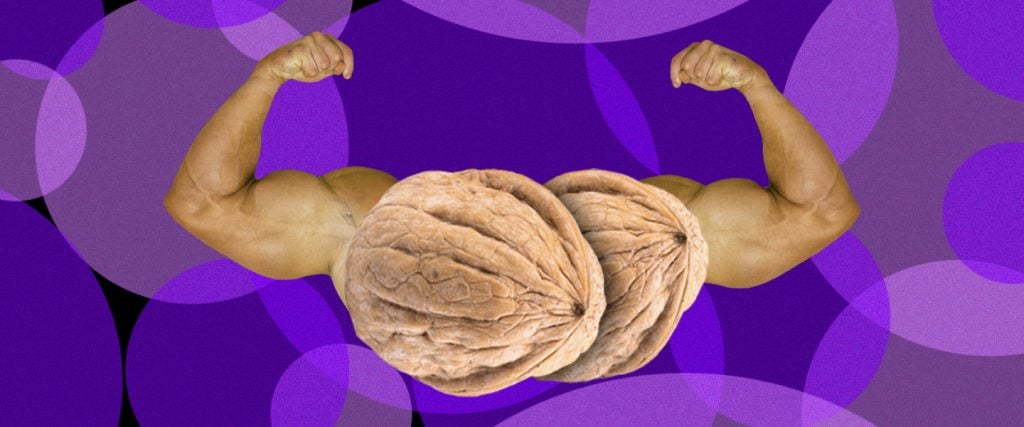April is Testicular Cancer Awareness Month, and we’re grabbing it right by the balls. Every day for the entire month, we will be publishing a new story aimed at getting men to better consider — and cherish — their family jewels in hopes of helping prevent a diagnosis that, if caught early enough, shouldn’t prove fatal. Read everything here.
For better or worse, the size of a man’s balls are routinely believed to contribute to his masculinity. The most exaggerated example is probably pro wrestling magnate Vince McMahon, who is routinely credited with possessing “enormous grapefruits” on WWE programming. So much so that his awkward strut and swagger have been attributed to said grapefruits, as opposed to the clearly steroid-enhanced lats and quads that no man over the age of 70 should ever possess.
However, while we’re on the topic of steroids, the reason they’re so sought after is because they imbue the body with a synthetic form of testosterone, essentially boosting the amount of testosterone produced by the testicles. Essentially, then, the psychological leap being made between the ownership of big balls and the posture of masculinity has a natural link with the idea that those big balls are pumping out more testosterone than a smaller set.
Does the size of my balls have any bearing on the amount of testosterone my body can produce?
According to the results of more than one study, the size of your testicles may matter in at least a couple of areas associated with male health. That said, one of these studies was conducted with sheep — or “rams” as the males are referred to — so take them with whatever size grain of salt you reserve for cross-mammalian comparisons. Per the study, scrotal circumference was a significant predictor of the rams’ testosterone levels, sperm production and aggression levels, with larger testes being associated with higher measurements in all areas.
Meanwhile, back in the world of actual human beings, a separate study found that infertile men have smaller testicles on average than fertile men.
So if you’re keeping score, there is some evidence to suggest that testicle size matters with respect to testosterone production and semen production. But again, a lot of this depends on exactly how valid comparisons between humans and sheep are.
How much more testosterone are we talking about?
Actually, quite a bit.
In the goat study, the average difference in testosterone production between a set of small berries in the 10th percentile and a bulging set of 90th-percentile balloons was two-fold. So there’s plenty of rationale behind the logic that a set of gargantuan gonads is teaming with far more testosterone than a pair of pitiful pebbles.
But again — to be totally clear — we should be wary of just how far we’re willing to extrapolate based on data derived from goats.
According to my tape measure, I have big balls! This means I probably have more testosterone than most men!
Congratulations on your big balls! You should be very proud of the genes you inherited from your parents. I will forgo asking the uncomfortable question about who you received your big balls from — your mom or your dad. Either way, enjoy your voluminous gift.
Should you decide to procreate, the added testosterone present in your balls might provide you with an advantage in sperm production, thereby making you more successful at siring children. Also, testosterone does provide you with a natural advantage during fitness training, so you have that going for you as well. However, if you find the elevated testosterone generated by your Goliath globes making you more aggressive and leading you into trouble, I suggest you develop a method for curbing that behavior. I don’t think the criminal justice system is prepared to entertain the big-balls defense inside of a courtroom just yet.

